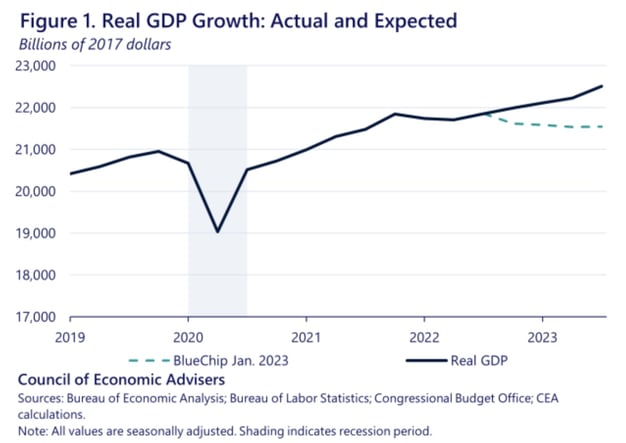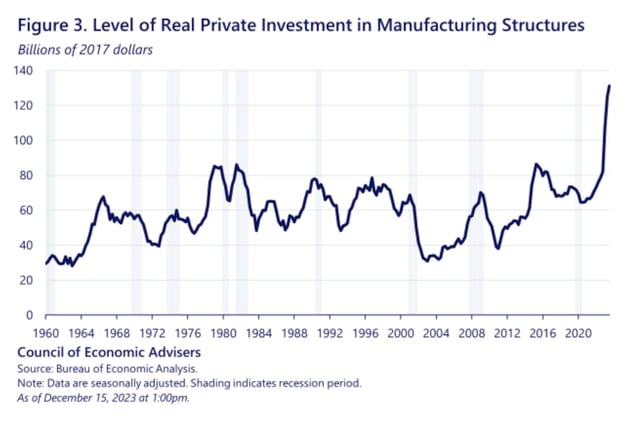
The word "unprecedented" became the banner flag of the COVID-19 pandemic period of 2020-2023. You probably heard that word regularly on TV, in the press, with friends, and at work. The frequency of its usage seemed simultaneously cliche and hauntingly accurate.
The pandemic and its effects introduced a barrage of challenges for businesses, employees, and markets.
Since 2020, chaos has been the common denominator for business. Many businesses faced significant drops in revenue due to reduced customer demand and enforced closures while struggling with excess or misaligned inventory levels. Global supply chain disruptions led to shortages of essential materials, increasing costs and delaying production cycles. There was a sudden need for remote work infrastructure and fluency, with organizations scrambling to implement digital tools, policies, and practices. In the retail sector, there was a sudden and massive shift towards e-commerce, demanding rapid adaptation. Business model reinvention was necessary for many businesses throughout the pandemic.
Businesses had to navigate a constantly changing landscape of regulations and safety protocols, adding operational complexity. Health policies and procedures directly or indirectly related to COVID-19 were not the only health-related considerations for businesses. Many employees, limited by isolation, needed more from their workplaces. Mental health became a larger focus for businesses as employees felt the effects of isolation, burnout, change, and stress in an ever-changing world.
The pandemic also gave rise to what is now known as the "Great Resignation," with many employees choosing to leave their jobs. This mass exodus resulted in severe talent shortages across various industries, exacerbating businesses' challenges. To attract and retain talent in this competitive market, businesses had to deal with increased pay demands, further straining their resources. This period underscored the importance of flexible work arrangements and comprehensive benefits packages in modern employment. Small businesses particularly struggled with the rapidly rising labor costs and the talent competition that was no longer limited to location.
The constant onset of new challenges during the pandemic left businesses in a near-constant reactive mode, impeding intelligent, proactive decision-making. Each new wave of COVID-19 cases brought fresh restrictions and disruptions, forcing businesses to pivot without sufficient time to strategize effectively continually. This reactive pattern often led to short-term solutions instead of informed, long-term strategies. For instance, many businesses had to take on additional debt or drastically cut expenses to survive immediate challenges, potentially jeopardizing future growth. Additionally, the rapid implementation of remote work often occurred without robust cybersecurity measures, leaving businesses vulnerable to cyberattacks. The frequency and severity of disruptions during the pandemic forced many businesses into a defensive stance, making it difficult to strategize and prepare for a post-pandemic future.
Finally, in 2023, the economy felt the long tail of continuous disruption. Inflation created new economic pressures that acutely hurt businesses, consumers, economies, and the political sphere. Inflation became the hangover from a period of "unprecedentedness." In 2023, there were clear signs of change. Real wages increased in 2023 alongside lower inflation rates and strong nominal wage growth received by workers. The economy outperformed expectations, setting the stage for 2024.
The business landscape appears more promising than in the past few years. Optimism is in the air, but it hangs cautiously.
Businesses stand on the cusp of considerable transformation as they apply lessons learned during the pandemic to new ways of operating. The stabilization of global supply chains foretells a reduction in material shortages, better inventory management, and the restoration of delivery timelines, aiding in cost control and customer satisfaction.
Technology adoption has leapfrogged, with businesses now more experienced in integrating digital tools seamlessly across operations. This capability enhances business agility and resiliency, enabling quick adaptation to market changes while providing a strong defense against cyber threats.
Accustomed to upheavals, many businesses are now better equipped to engage in proactive and strategic planning. The shift from short-term reactive tactics to long-term strategies is spurred by reduced economic volatility and clearer regulatory environments. With a more predictable context, businesses can confidently pursue growth initiatives, investing in innovation and expansion.
Labor markets are stabilizing, potentially easing the talent wars that dominated during the "Great Resignation." Companies are coming to the forefront with more than just increased salaries; they're offering comprehensive benefits packages, remote and flexible work options, and a greater focus on employee well-being. These improvements redefine modern employment and are vital for attracting and retaining a skilled workforce.


Inflationary pressures are easing as supply and demand reach new equilibrium and businesses adapt to the post-pandemic economy. As the unpredictable events of 2020-2023 subside, consumer confidence is rebuilding, expected to rejuvenate spending and drive economic growth.
Analysts foresee this year's positive earnings and revenue growth for all eleven market sectors (Forbes, 2024). Still, some sectors are expected to outperform due to the alignment of market forces with their unique strengths. For instance, technology and healthcare companies, experiencing substantial demand growth during the pandemic, have been well-positioned for success in 2024.
These shifts present 2024 as a gateway to rejuvenated business strategies focused on sustainability, stability, and growth, a palpable departure from the pandemic's reactive scramble. With fortified operations, supportive technologies, and a revitalized workforce, businesses are poised to embrace innovation and explore new markets, delineating a year of revitalized prospects.
In summary, 2024 is a year of growth and opportunity for businesses. The lessons learned during the pandemic have transformed businesses' operations with improved agility, resilience, and strategic planning capabilities. With a stabilized economy and labor markets, businesses can pursue growth initiatives and adapt to a post-pandemic world. Promising market conditions, technological advancements, and a renewed focus on employee well-being make 2024 a year of positive change for all sectors. It's time for businesses to seize this opportunity to thrive.
Source: Forbes, Stock Market Forecast For 2024, Jan 5, 2024
by Jonathan Franchell, CEO of Ironpaper - For more tips and hacks: Need to remove a new line after h1 tags? Both web designers and SEO practitioners need to employ headline tags: H1, H2, H3 in several ways to improve web page structure and tag...

The marketing industry is transforming significantly due to generative AI and increasing market complexity. Gartner's prediction of a 25% decline in traditional search traffic suggests that the era of search engines is dying. AI tools, particularly...

The Crowded Arena of the IT Marketplace Updated December 2024 The Information Technology (IT) landscape is experiencing rapid growth and intensifying competition. IT spending is projected to reach nearly 5.1 trillion U.S. dollars in 2024, a...

Updated December, 2024 The field of digital marketing is evolving rapidly in response to new technology and changing buyer expectations. To help career-minded marketers, we’ve rounded up the top 10 skills needed to succeed in the field. These are...
